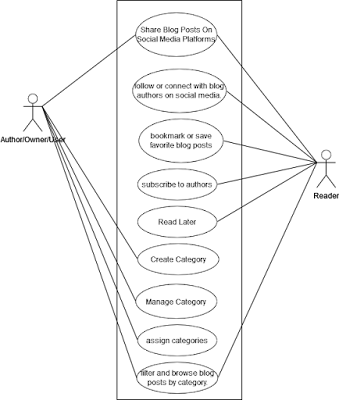In this Article first of all we learn about what is UML? then we will see the Uml Diagrams for Blogging Platform mini project that helps to student to develope a the Blogging Platform mini project .
It helps to student who are studing in BCS,BCA, BTech,BE,MCA for drawing UML diagram for thier acadmic project .they can get referance from this diagrams.
Lets Start,
What is UML?
UML is Stands for Unified Modeling Language . It is a part of Software
Engineering . Typically ,software architects or designers aften take the lead
in creating UML diagrams to communicate and document the system's design. It's
a standardized way to visually represent and design software systems.






Comments
Post a Comment